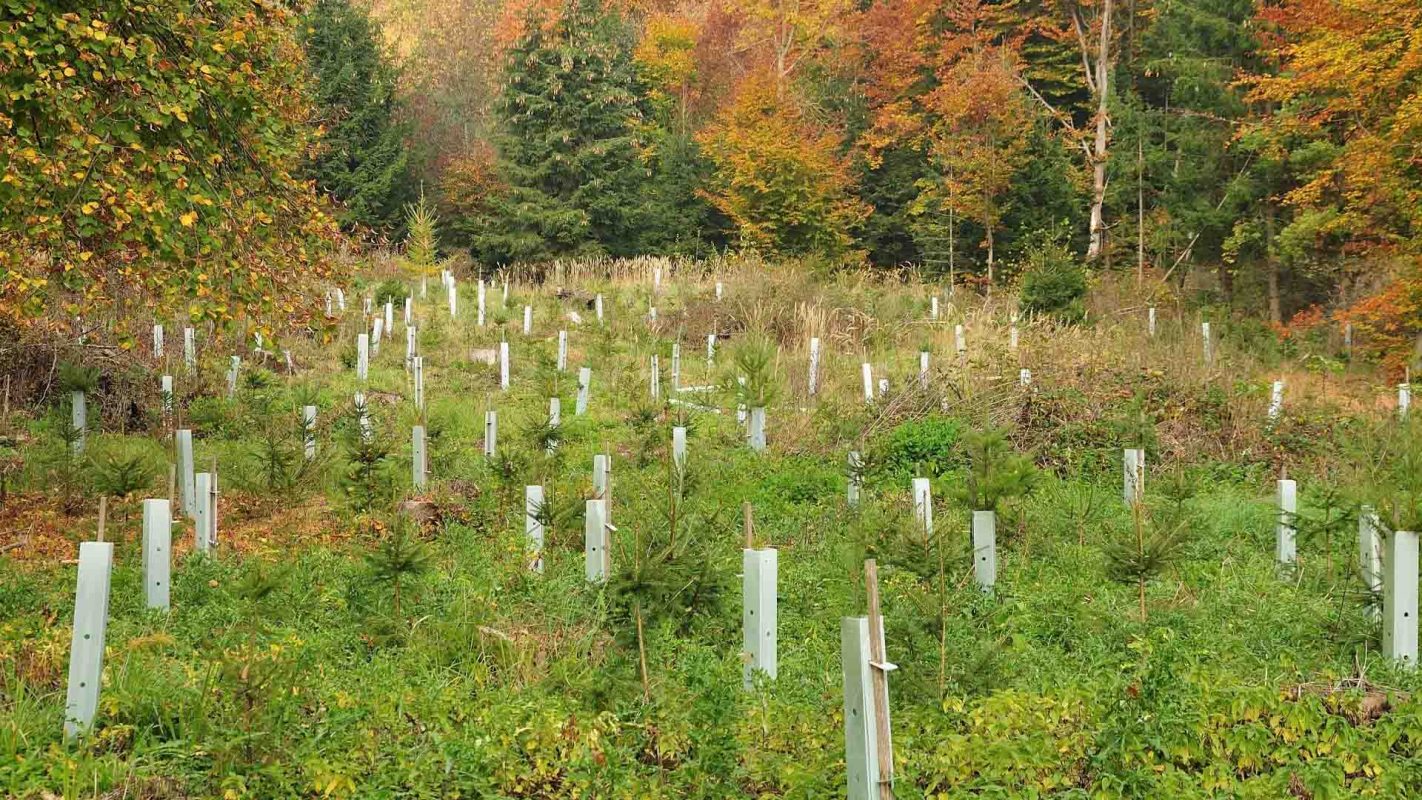Our planet has natural assets like oceans, forests, soil, and mangroves that absorb carbon from the atmosphere and regulate Earth's temperature. These are also known as carbon sinks.
But nature is struggling to keep up with humanity's rising amount of carbon pollution. And practices like deforestation are weakening nature's ability to store some of this pollution.
The increased release of carbon and other polluting gases like methane into the atmosphere acts like a blanket over the Earth, trapping heat the planet would have normally expelled into space.
A hotter planet increases the severity of extreme weather events, like intense droughts and hurricanes, which can cause water and food shortages.
Carbon removal can help restore and increase nature's ability to draw polluting gases from the air while technology can help us draw out carbon pollution faster.
What is carbon removal?
Carbon dioxide removal (CDR) uses nature or machines to absorb carbon pollution either from a source on the ground, like a methane gas production facility, or from the atmosphere itself.
The two primary types of CDR are nature-based and technology-based.
Nature-based techniques include conserving our forests, protecting our ocean ecosystems, and restoring our wetlands, since they all store huge amounts of carbon efficiently.
By saving the places that absorb and store carbon (by avoiding deforestation and planting more trees, for example), we ensure that our natural assets can continue to help us clean up pollution. It is estimated that using nature in this way could potentially contribute 37% to our climate pollution reduction goals by the end of the decade.
Technology-based techniques of CDR involve machines that are built to capture polluting gases and either store them away or use them to produce other products, such as fuel.
Land-based carbon removal
Land-based solutions involve capturing and storing carbon in the soil, vegetation, and other natural systems on land.
The most popular carbon removal method is leveraging forests, the lungs of the Earth, by either restoring trees that were cut down or planting new trees in barren areas.
Protecting trees is critical because trees naturally absorb carbon from the atmosphere during photosynthesis and store it in their roots, trunks, and stems. And when they die and decompose, their carbon sinks into the soil.
Another method is carbon farming, which uses techniques like composting to add nutrients to the soil to help boost how much carbon it absorbs — since unhealthy soil doesn't absorb nearly as much carbon as healthy soil.
Reducing how much soil is being turned over as well as planting a variety of trees and other vegetation on farmland can help soil retain its nutrients and absorb more carbon.
Ocean-based carbon removal
Oceans absorb about a quarter of the carbon pollution that humans create. Reviving and protecting our oceans and coastlines is incredibly effective for CDR since coastal plants can absorb carbon 100 times faster than forests and store it for thousands of years.
Mangroves and salt marshes absorb carbon 10 times faster than tropical forests. Seagrass meadows on the seafloor store 11% of carbon in the ocean even though they make up only 0.1% of the seafloor.
Ocean fertilization is a CDR method that adds nutrients (such as iron) to the ocean to encourage the growth of phytoplankton — tiny plants that live in the ocean and absorb carbon from the water as they grow. When phytoplankton die, they sink to the bottom of the ocean and take the carbon they have absorbed with them.
The ocean also directly absorbs carbon pollution, but as it dissolves in seawater, it becomes carbonic acid, which makes the ocean more acidic, damaging its ability to absorb more carbon pollution and endangering marine life and our food supply.
Technological solutions
But if nature already does so much of the heavy lifting, why do we need technological approaches?
Well, when nature is destroyed during events like wildfires, it releases carbon dioxide back into the atmosphere, so there are concerns about how permanent nature-based carbon removal can be.
There are multiple technology-based carbon removal techniques to answer for this, including methods that capture polluting gases at the source and store it away, called carbon capture and storage (CCS), and methods that capture gases and turn them into other products such as fuel, called carbon capture, utilization, and storage (CCUS).
CCS can capture carbon from an industrial process like steel making or coal production by using a chemical that prevents the carbon from reaching the atmosphere.
Direct Air Capture (DAC) sucks carbon directly from the air and uses chemical reactions to separate carbon dioxide from other gases.
If the carbon isn't used to make other products, it gets converted into a liquid before it is transported from the production site through a pipeline and stored deep underground.
The U.S. currently has the largest CCUS project, operated by ExxonMobil in Wyoming. And a North Carolina company called Net Power is aiming to build the world's first zero-emissions gas power plant in Texas by 2026.
DAC isn't ready for commercial development yet, as it's still being tested. The largest DAC plant is currently being developed in Texas and is scheduled to open in 2024.
Not a silver bullet
Using machines to capture carbon from the air isn't going to solve all our problems, especially because the processes are extremely expensive.
The goal is to drive down costs to $100 per ton of carbon removed by the end of the decade, but experts say the target is ambitious and will take around 15 to 20 years.
Taking carbon pollution from the atmosphere doesn't reduce the need to move toward more sustainable living.
Reducing how much pollution we produce is still the number one priority to slow down the overheating of our planet.
Want more? Follow The Cool Down on Instagram and join our Weekly Newsletter for cool stories and easy tips that save you money, time, and our planet.








